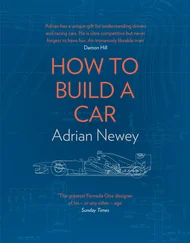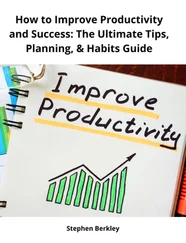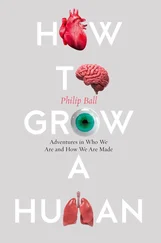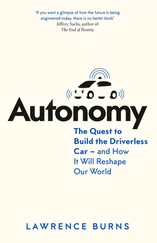Eyal, Nir - Hooked - How to Build Habit-Forming Products
Здесь есть возможность читать онлайн «Eyal, Nir - Hooked - How to Build Habit-Forming Products» весь текст электронной книги совершенно бесплатно (целиком полную версию без сокращений). В некоторых случаях можно слушать аудио, скачать через торрент в формате fb2 и присутствует краткое содержание. Год выпуска: 2014, Издательство: Nir Eyal, Жанр: Старинная литература, на английском языке. Описание произведения, (предисловие) а так же отзывы посетителей доступны на портале библиотеки ЛибКат.
- Название:Hooked: How to Build Habit-Forming Products
- Автор:
- Издательство:Nir Eyal
- Жанр:
- Год:2014
- ISBN:нет данных
- Рейтинг книги:5 / 5. Голосов: 1
-
Избранное:Добавить в избранное
- Отзывы:
-
Ваша оценка:
- 100
- 1
- 2
- 3
- 4
- 5
Hooked: How to Build Habit-Forming Products: краткое содержание, описание и аннотация
Предлагаем к чтению аннотацию, описание, краткое содержание или предисловие (зависит от того, что написал сам автор книги «Hooked: How to Build Habit-Forming Products»). Если вы не нашли необходимую информацию о книге — напишите в комментариях, мы постараемся отыскать её.
Hooked: How to Build Habit-Forming Products — читать онлайн бесплатно полную книгу (весь текст) целиком
Ниже представлен текст книги, разбитый по страницам. Система сохранения места последней прочитанной страницы, позволяет с удобством читать онлайн бесплатно книгу «Hooked: How to Build Habit-Forming Products», без необходимости каждый раз заново искать на чём Вы остановились. Поставьте закладку, и сможете в любой момент перейти на страницу, на которой закончили чтение.
Интервал:
Закладка:
- Variable rewards must satisfy users’ needs, while leaving them wanting to re-engage with the product.
***
Do This Now
Refer to the answers you came up with in the last “Do This Now” section to complete the following exercises:
- Speak with five of your customers in an open-ended interview to identify what they find enjoyable or encouraging about using your product. Are there any moments of delight or surprise? Is there anything they find particularly satisfying about using the product?
- Review the steps your customer takes to use your product or service habitually. What outcome (reward) alleviates the user’s pain? Is the reward fulfilling, yet leaves the user wanting more?
- Brainstorm three ways your product might heighten users’ search for variable rewards using:
- Rewards of the Tribe - gratification from others
- Rewards of the Hunt - things, money or information
- Rewards of the Self - mastery, completion, competency or consistency

5. INVESTMENT
In the Trigger phase of the Hook Model, we discussed the importance of aligning with the right internal triggers. Then, by utilizing external triggers, designers can prompt users with information for the next intended action.
Next, in the Action phase, we learned about the role of the smallest actions taken in anticipation of immediate rewards. And in the previous chapter on Rewards, we looked at how variable outcomes influence repeat engagement. There is one last step in the Hook Model that is critical for building habit-forming technologies. Before users create the mental associations that activate their automatic behaviors, they must first invest in the product.
Changing Attitude
In chapter one, we learned about the tooth flossing study conducted at University College London, where researchers determined that the frequency of a new behavior is a leading factor in forming a new habit. The study also found that the second most important factor in habit formation is a change in the participant’s attitude about the behavior. The finding is consistent with the Habit Zone graph explained in chapter one, which illustrates that for a behavior to become routine it must occur with significant frequency and perceived utility. Attitude change is the movement up the perceived utility axis until the behavior enters the Habit Zone.
But in order for a change in attitude to occur, there must be a change in how users perceive the behavior. In this chapter, we will start by exploring the mystery surrounding how small investments change our perception, turning unfamiliar actions into everyday habits.
A psychological phenomenon known as the escalation of commitment has been shown to make our brains do all sorts of funny things. The power of commitment makes some people play video games until they keel over and die. [c]It is used to influence people to give more to charity. [ci]It has even been used to coerce prisoners of war into switching allegiances. [cii]The commitments we make have a powerful effect on us and play an important role in the things we do, the products we buy, and the habits we form.
The more users invest time and effort into a product or service, the more they value it. In fact, there is ample evidence to suggest that our labor leads to love.
We Irrationally Value Our Efforts
In a 2011 study, Dan Ariely, Michael Norton and Daniel Mochon measured the effect of labor on how people value things. [ciii]
University students in America were given instructions to assemble an origami crane or frog. After the exercise, students were asked to purchase their creation, bidding up to one dollar. Builders were informed that a random number between 0 and 100 would be drawn. If it exceeded their reservation price, the builders would return empty handed — but if it was equal to or less than the builder's bid, they would pay their bid and keep the origami. Meanwhile, a separate group of students located in another room, unaware of the identity of the builders, were asked to bid on their origami using the same procedure. Similarly, a third independent group was asked to bid on expert-made origami under the same criteria.
The results showed that those who made their own origami animals valued their creation five times higher than the second group’s valuation, and nearly as high as the expert-made origami values (figure 29). In other words, those who invested labor associated greater value with their paper creations simply because they had worked on them. Ariely calls this the “IKEA effect.”
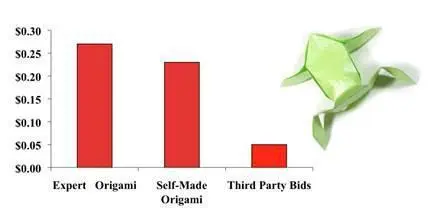
Figure 29
IKEA, the world’s largest furniture retailer, sells affordable, ready-to-assemble household furnishings. The Swedish company’s key innovation is its packaging process, which allows the company to decrease labor costs, increase distribution efficiency, and better utilize the real estate in its stores.
Unlike its competitors who sell pre-assembled merchandise, IKEA puts its customers to work. It turns out there’s a hidden benefit to making users invest physical effort in assembling the product — by asking customers to assemble their own furniture, Ariely believes they adopt an irrational love of the furniture they built, just like the test subjects did in the origami experiments. Businesses that leverage user effort confer higher value to their products simply because their users have put work into them. The users have invested in the products through their labor.
We Seek to be Consistent with Our Past Behaviors
How much do past behaviors alter our future actions? We’d like to think we are free to choose to act in any way we’d like — that our judgment is not clouded by our past actions. But in fact, studies reveal that our past is an excellent predictor of our future.
A team of researchers asked a group of suburban residents to place large, unsightly signs in front of their homes which read “Drive Carefully.” [civ]Two groups were tested. In the first group, only 17 percent of the subjects agreed to the request, while 76 percent of those in the second group agreed to post the ugly yard signs. What was the cause of this huge discrepancy? The groups were identical, with the exception of one factor.
Those in the second group were approached two weeks prior to the yard sign request and asked to place a much smaller, three-inch sign with the words, “Be a safe driver,” in their window. Nearly everyone who was asked to place the smaller message agreed. When the researchers returned two weeks later, a whopping majority of these residents willingly replaced the small sign with the large one on their front lawns.
The homeowner’s greater willingness to place the large, obtrusive sign on their lawns after agreeing to the smaller ones demonstrates the impact of our predilection for consistency with our past behaviors. Little investments, such as placing a tiny sign in a window, can lead to big changes in future behaviors.
We Avoid Cognitive Dissonance
In a classic Aesop’s Fable, a hungry fox encounters grapes hanging from a vine. The fox desperately wants the grapes. But as hard as he may try, he can not reach them. Frustrated, the fox decides the grapes must be sour and that he therefore would not want them anyway.
In the story, the fox comforts himself by changing his perception of the grapes because it is too uncomfortable to reconcile the thought that the grapes are sweet and ready for the taking, and yet, he can not have them. To reconcile these two conflicting ideas, the fox changes his perception of the grapes and in the process relieves the pain of what psychologists call “cognitive dissonance.”
Читать дальшеИнтервал:
Закладка:
Похожие книги на «Hooked: How to Build Habit-Forming Products»
Представляем Вашему вниманию похожие книги на «Hooked: How to Build Habit-Forming Products» списком для выбора. Мы отобрали схожую по названию и смыслу литературу в надежде предоставить читателям больше вариантов отыскать новые, интересные, ещё непрочитанные произведения.
Обсуждение, отзывы о книге «Hooked: How to Build Habit-Forming Products» и просто собственные мнения читателей. Оставьте ваши комментарии, напишите, что Вы думаете о произведении, его смысле или главных героях. Укажите что конкретно понравилось, а что нет, и почему Вы так считаете.


